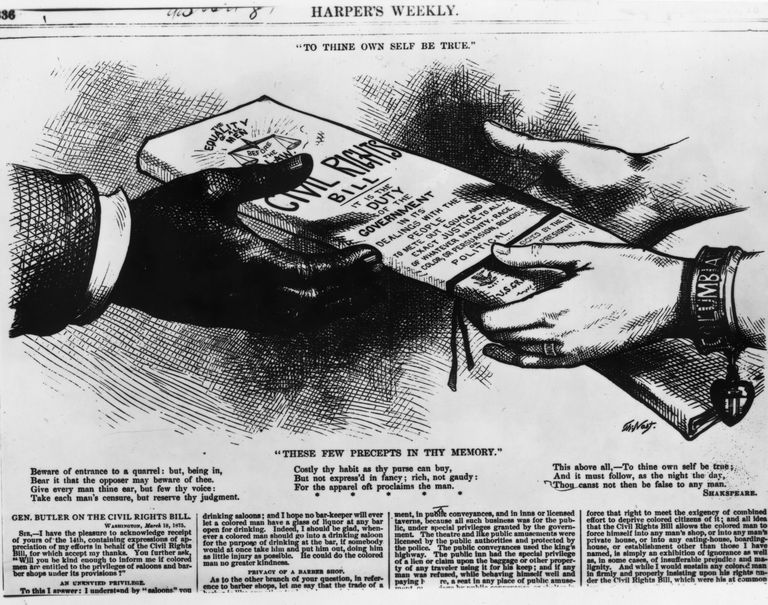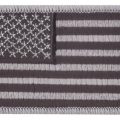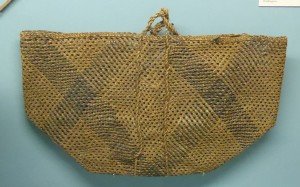
Following the Civil War, the American government renewed its efforts to expand into the West, which required more dealings with Indian nations. Briefly described below are some of the events of 1866.
Federal Government Actions
Congress granted the Atlantic & Pacific Railroad a right-of-way across the west which included the odd sections of land forty miles outward from the right-of-way. In his book I Am The Grand Canyon: The Story of the Havasupai People, Stephen Hirst reports:
“Much of the railroad lay squarely through Indian territory in Oklahoma, New Mexico, and Arizona. Where settlers already owned lands within the forty-mile limit, the railroad company received lands lying beyond the forty-mile limit.”
In The Kansas Indians the Supreme Court struck down a state property tax on tribal lands. According to the Court, state tax laws do not affect tribal trust lands until Congress so provides or until there is a voluntary abandonment of tribal organization. State governments, however, were eager to tax tribal lands even though they provided no services to Indians.
In Nevada, the U.S. military asked Sarah Winnemucca and her brother Naches to come to Fort McDermitt, Nevada to discuss the relationships between the Paiute and the government. She was also asked to help persuade her father to bring his people to the Pyramid Lake Reservation. With her knowledge of both English and Paiute, she was hired by the army as their official interpreter to the Shoshone and Paiute.
The Seneca Nation sued the State of New York over the state’s attempts to tax the Seneca Nation. The federal courts held that a state has no authority to tax tribal lands.
A government report on the status of non-reservation Indians in California stated:
“The Indians other than those aforementioned reside in various section of the state, in small communities; in some localities their presence is obnoxious to the citizens; in others they are tolerated on account of the labor they perform for the whites; their condition is deplorable and pitiful in the extreme; they are demoralized both physically and morally.”
In Oregon, 33 Warm Springs men enlisted as Army scouts at Old Fort Dalles. Within a month, 70 more enlisted to fight with the army against the Shoshone and Paiute.
Treaties
In Colorado, the United States held a treaty council with the Cheyenne. The Cheyenne leaders included Black Kettle and Medicine Arrows (the war chief of the Dog Soldiers society). The Cheyenne signed a treaty even though they protested the fact that it excludes them from the Smoky Hill country, a favorite hunting area.
Following the treaty council, Cheyenne peace chief Black Kettle told the Americans that the Cheyenne had changed their mind about their earlier treaty and they could not leave the Smoky Hill country. According to Gregory Michno, in an article in Wild West:
“Apparently the vocal warrior societies had finally convinced the peace chiefs that they meant business.”
The Americans wined and dined Black Kettle, promising him $14,000 worth of gifts if he would attend another treaty council.
In Colorado, the United States held a treaty council with the Sioux, Arapaho, and Cheyenne. With the aid of Black Kettle, the Indians were persuaded to sign the treaty.
In North Dakota, 23 Arikara leaders, including White Shield, signed the Treaty of Fort Berthold in which they agreed to maintain peaceful relations, abide by the laws of the United States, and allow the construction of roads and telegraph lines through their territory. In an addendum to the treaty, the Mandan and Hidatsa agreed to cede some lands for the construction of a stage line. The treaty, however, was not ratified by Congress.
In Kansas, the Absentee Shawnee negotiated another treaty with the United States. The Senate, however, once again failed to ratify the treaty.
Reservations
In Montana, concerned about the non-Indian encroachment on Flathead lands in the Bitterroot Valley, the Indian agent held a council to discuss with them the possibility of removal to the Jocko Reservation. Chief Victor and about 100 Flathead attended the council. While no solutions were attained, the agent considered the council to be successful.
In Washington, the Shoalwater Bay Reservation was established for the Shoalwater Bay Tribe of Chinook and Chehalis by executive order. The reservation was given 335 acres on the coast of Southwestern Washington. The tribe was also referred to as the Georgetown Indians.
In Nebraska, the Indian agent for the Omaha accused chief Joseph La Flesche with producing discord among the tribe, leaving the reservation without permission, lending money at usurious rates, encouraging the tribal police to inflict unfair punishments, and refusing to allow people to deal with licensed traders. The agent called for him to be deposed as tribal chief and to be banished. La Flesche’s protector, the Presbyterian mission school superintendent, was then dismissed. La Flesche and his family hastily fled from the reservation.
A few months later, the Indian agent agreed to allow La Flesche to return to the reservation, but only if he agreed to be subordinate to the agent. In her book Betraying the Omaha Nation, 1790-1916, historian Judith Boughter reports:
“La Flesche did return home, but he never again held a seat on the tribal council and apparently was recognized as a leader only among his band of followers in the young men’s party.”
In Nebraska, the Omaha complained because they were now receiving part of their annuities in goods and they needed the cash.
In New Mexico, the Navajo) were allowed to leave the Bosque Redondo and return to their homeland. In 1862, the Navajo had been brutally rounded up and forced to walk to a reservation (concentration camp) at Bosque Redondo. Here, in an area of poor farm land, they were to be forced to farm in the American way. Navajo historian Jennifer Denetdale, in an article in the New Mexico Historical Review, writes:
“The years at the Bosque Redondo reservation were unremittingly brutal and harsh. Navajo captives endured freezing winters and unforgiving summer heat. They were forced to labor for the benefit of the soldiers and live in pits in the ground. Starvation, disease, and sexual violence were epidemic.”
The experiment at the Bosque Redondo had failed to transform the Navajo into Americans and had cost the federal government millions of dollars. The primary reason for allowing them to return home was that Congress was no longer willing to pay for their upkeep. Much of the money which had been allocated to the Bosque Redondo had gone to private contractors who charged inflated prices for poor quality goods.
The Navajo began their return march with 1,550 horses out of the 60,000 horses which they had owned before their defeat, and with 950 sheep out of the 250,000 sheep which they had before the Long Walk.
In Washington, a government official estimated that five-eighths of the diet of the Colville came from salmon. Most of the salmon were caught at Kettle Falls.
In Oklahoma, Lone Wolf assumed leadership of the Kiowa following the death of Dohausan who had been chief since 1833. The Kiowa, however, were divided into two factions: Kicking Bird and Stumbling Bear felt that the Kiowa must remain at peace with the Americans, while Santanta, Lone Wolf, and Satank would prefer to fight for their lands.
A government physician was sent among the Kiowa to vaccinate them against smallpox.
In North Carolina, smallpox killed 125 Cherokee.
State and Territorial Actions
In Maine, the state ruled that elections for the Penobscot governor and lieutenant governor were to be held every year. Furthermore, the state ruled that the candidates must come from one “party” (actually an old traditional moiety) one year and from the other the next.
In recognition of the Confederate service by the Cherokee, the North Carolina General Assembly passed an act that provides:
“That the Cherokee Indians who are now residents of the State of North Carolina, shall have the authority and permission to remain in the several counties of the state where they now reside.”
The Washington Territorial Legislature prohibited marriage between “Whites” and Indians or people who are half Indian. It grouped these marriages with polygamy and incest and did not allow for common-law marriages. According to historian Brad Asher, in his book Beyond the Reservation: Indians, Settlers, and the Law in Washington Territory, 1853-1889:
“Such laws made race a central ordering principle of territorial society.”
The Oregon State Legislature prohibited marriage between “Whites” and Indians or people who were half Indian.
Christian Missions
In Montana, the Jesuits moved their mission to the Blackfoot to a new site east of Bird Tail Rock. However, the Jesuit hierarchy then closed the new St. Peter’s Mission and ordered the missionaries to the St. Ignatius Mission on the Flathead Reservation.
In Montana, the Bitterroot Salish (also known as Flathead) had stayed in their homeland instead of moving to the Flathead reservation which had been established for the area tribes. While the first Jesuit mission in Montana had been established among the Salish in the Bitterroot Valley, the mission had been closed and the St. Ignatius Mission established on the reservation. The Jesuits were unable to persuade the Bitterroot Salish to move from the Bitterroot Valley and to relocate near the St. Ignatius mission. In 1866, Jesuits thus re-established the St. Mary’s mission in the Bitterroot Valley.




Leave a Reply